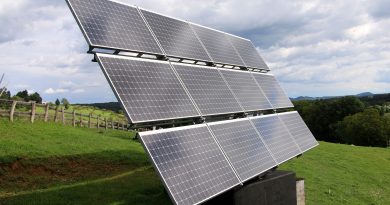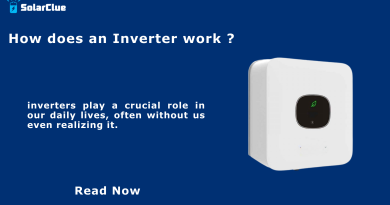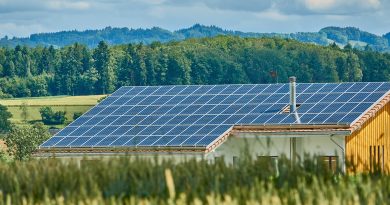What Is The Payback Time For Solar Panels?
Investing in solar panels is a significant financial decision, and understanding the payback period—the time it takes to recover your initial investment through energy savings—is crucial. This guide will help you understand the factors that influence solar panel payback times, how to calculate them, and strategies to maximize your return on investment (ROI) in India. Whether you’re considering a small residential system or a larger commercial setup, this guide provides the insights you need to make informed decisions.
Table of Contents
- 1 Understanding Payback Period and Return on Investment
- 2 Factors Affecting Solar Panel Payback Time
- 3 Calculating the Cost of a Solar Panel System
- 4 Estimating Electricity Savings with Solar Panels
- 5 The Impact of Government Incentives and Rebates
- 6 Comparing Payback Periods for Different System Sizes
- 7 Maximizing Solar Panel Output to Reduce Payback Time
- 8 Analyzing Financial Benefits Beyond Electricity Savings
- 9 The Role of Battery Storage in Payback Period
- 10 The Future of Solar Panel Costs and Payback Times
- 11 Tools and Calculators for Estimating Payback Period
- 12 Table: Factors Influencing Solar Panel Payback Periods
- 13 Conclusion
- 14 FAQ Section
Understanding Payback Period and Return on Investment
What is the Payback Period?
- Definition: The payback period is the time it takes for the savings generated by a solar panel system to equal the initial cost of the system. Once this period is surpassed, the system starts generating net savings.
- Importance: A shorter payback period means you start seeing a return on your investment sooner, making the decision to go solar more financially attractive.
What is Return on Investment (ROI)?
- Definition: ROI measures the profitability of an investment. In the context of solar panels, it compares the total savings and benefits over the system’s lifespan to the initial investment cost.
- Formula: ROI (%) = [(Total Savings – Initial Cost) / Initial Cost] * 100
Factors Affecting Solar Panel Payback Time
System Size
- Larger Systems: Generally have higher upfront costs but generate more electricity, potentially leading to more significant savings and a shorter payback period.
- Smaller Systems: Lower upfront costs, but may have longer payback periods due to lower energy production.
Location
- Solar Irradiance: Areas with more sunlight hours will generate more electricity, reducing the payback period.
- Local Electricity Rates: Higher electricity rates mean greater savings from solar panels, which shortens the payback period.
Electricity Rates
- Net Metering: In regions with favorable net metering policies, excess energy can be sold back to the grid, increasing savings and reducing payback time.
- Time-of-Use (TOU) Rates: In areas with TOU rates, solar energy can help avoid peak electricity costs, further shortening the payback period.
Government Incentives and Rebates
- Tax Credits: Central and state-level tax credits can significantly reduce the upfront cost of a solar panel system, leading to a shorter payback period.
- Rebates and Grants: Additional rebates and grants can further reduce costs, positively impacting the payback time.
Calculating the Cost of a Solar Panel System
System Cost Breakdown
- Panels and Inverters: These are the core components and usually account for the bulk of the cost.
- Installation Costs: Includes labor, permits, and any necessary electrical upgrades.
- Maintenance Costs: While solar panels require minimal maintenance, periodic cleaning, and occasional inverter replacements should be factored in.
Example Calculation (In INR)
- System Size: 5 kW
- Cost per Watt: ₹50
- Total System Cost: 5,000 watts * ₹50/watt = ₹2,50,000
- Subsidy (30% Approx.): ₹2,50,000 * 0.30 = ₹75,000
- Net System Cost: ₹2,50,000 – ₹75,000 = ₹1,75,000
Estimating Electricity Savings with Solar Panels
Monthly and Annual Savings
- Average Monthly Usage: Determine your average monthly electricity usage in kWh from your utility bills.
- Solar Offset: Estimate the percentage of your electricity that will be covered by solar (usually 70-100%).
- Savings Calculation: Multiply the kWh offset by your electricity rate to determine monthly savings.
- Example: If you use 1,000 kWh/month, your solar system offsets 80% of this at ₹7/kWh, your monthly savings would be 800 kWh * ₹7 = ₹5,600.
Cumulative Savings
- Yearly Savings: Multiply your monthly savings by 12.
- Lifetime Savings: Multiply yearly savings by the expected lifespan of the system (usually 25 years).
- Example: ₹5,600 * 12 months = ₹67,200/year. Over 25 years, savings amount to ₹16,80,000.
The Impact of Government Incentives and Rebates
Central and State-Level Subsidies
- Subsidies: The Indian government offers subsidies for residential solar installations, typically covering 20-40% of the system cost. These subsidies significantly reduce the upfront cost and shorten the payback period.
State Incentives
- State-Specific Rebates: Some states offer additional rebates and incentives, further reducing the cost of solar installations. For example, states like Gujarat and Rajasthan have favorable solar policies.
Net Metering
- Energy Credits: Excess energy generated by your solar system can be fed back to the grid in exchange for credits, which can offset your electricity bill and reduce the payback period.
Comparing Payback Periods for Different System Sizes
Example Scenarios (In INR)
- 3 kW System: Lower upfront cost but may take longer to pay back due to lower energy production.
- Cost: ₹1,50,000 (after subsidy)
- Annual Savings: ₹45,000
- Payback Period: ₹1,50,000 / ₹45,000 = 3.33 years
- 5 kW System: Mid-range system with balanced cost and energy production, often resulting in a moderate payback period.
- Cost: ₹1,75,000 (after subsidy)
- Annual Savings: ₹67,200
- Payback Period: ₹1,75,000 / ₹67,200 = 2.6 years
- 10 kW System: Higher upfront cost but generates significant savings, potentially offering the shortest payback period.
- Cost: ₹3,50,000 (after subsidy)
- Annual Savings: ₹1,34,400
- Payback Period: ₹3,50,000 / ₹1,34,400 = 2.6 years
Maximizing Solar Panel Output to Reduce Payback Time
Optimal Panel Placement
- Orientation and Tilt: Position panels to face south (in the Northern Hemisphere) with an optimal tilt to maximize sunlight exposure.
- Avoiding Shading: Ensure panels are not shaded by trees or buildings, as this can significantly reduce output.
Maintenance
- Regular Cleaning: Dirt and debris can reduce panel efficiency, so regular cleaning can help maintain peak performance.
- System Monitoring: Use monitoring systems to ensure your panels are performing as expected and to quickly identify any issues.
Analyzing Financial Benefits Beyond Electricity Savings
Property Value Increase
- Home Value: Solar installations can increase property value, especially in markets where homebuyers value energy efficiency.
- Resale Value: Homes with solar panels may sell faster and for a premium compared to non-solar homes.
Energy Independence
- Reduced Utility Dependency: Solar panels reduce reliance on the grid, protecting against rising energy costs and providing energy security.
The Role of Battery Storage in Payback Period
Impact of Storage on Payback Time
- Increased Costs: Adding battery storage increases the upfront cost, which can extend the payback period.
- Enhanced Savings: Batteries allow for energy storage, which can be used during peak hours or during outages, potentially increasing savings and shortening the payback period.
Storage Considerations
- Battery Lifespan: Consider the lifespan and replacement costs of batteries when calculating the payback period.
- Time-of-Use Rates: Batteries can be particularly beneficial in areas with TOU rates, as stored energy can be used during peak pricing periods.
The Future of Solar Panel Costs and Payback Times
Declining Costs
- Technology Improvements: As solar technology advances, the cost of panels and inverters continues to decline, shortening payback periods.
- Increased Efficiency: More efficient panels generate more electricity, reducing the time it takes to recoup your investment.
Policy and Market Trends
- Expanded Incentives: Future policy changes may offer more incentives or tax credits, further reducing payback times.
- Market Growth: As solar adoption increases, economies of scale may drive down installation and maintenance costs.
Tools and Calculators for Estimating Payback Period
Online Calculators
- Solar Calculator: Use tools like the MNRE Solar Rooftop Calculator to estimate system costs, savings, and payback periods based on your location and energy usage.
- PVWatts Calculator: The National Renewable Energy Laboratory’s (NREL) PVWatts Calculator estimates energy production and costs for grid-connected PV systems.
Professional Assessments
- Solar Installers: Many solar installers offer free assessments that include detailed payback period calculations based on your specific situation.
- Financial Advisors: Consulting with a financial advisor can help you understand the broader financial implications of investing in solar panels.
Table: Factors Influencing Solar Panel Payback Periods
| Factor | Impact on Payback Period |
|---|---|
| System Size | Larger systems generate more savings, reducing payback time |
| Location | Areas with high solar irradiance shorten payback periods |
| Electricity Rates | Higher rates increase savings, reducing payback time |
| Government Incentives | Subsidies and tax credits lower initial costs, reducing payback time |
| Panel Efficiency | More efficient panels generate more energy, shortening payback time |
| Maintenance and Upkeep | Regular maintenance ensures optimal performance, reducing payback time |
| Battery Storage | Increases upfront cost but can enhance savings, impacting payback time |
Conclusion
Understanding the payback period for solar panels is essential for evaluating the financial viability of investing in solar energy. By considering factors like system size, location, electricity rates, and government incentives, you can make informed decisions that maximize your savings and reduce the time it takes to see a return on your investment. As solar technology continues to advance and costs decline, payback periods are likely to shorten, making solar energy an increasingly attractive option for both homeowners and businesses in India.
FAQ Section
1. What is the typical payback period for a solar panel system in India?
The payback period typically ranges from 2.5 to 5 years, depending on factors like system size, location, electricity rates, and available incentives.
2. How can I shorten the payback period for my solar panels?
You can shorten the payback period by maximizing solar panel output through optimal placement, taking advantage of government incentives, and reducing energy consumption.
3. Do government incentives really make a difference in payback periods?
Yes, government incentives like subsidies and tax credits can significantly reduce the upfront cost, shortening the payback period by several years.
4. Does adding battery storage affect the payback period?
Yes, while battery storage can increase upfront costs, it can also enhance savings by allowing you to use stored energy during peak pricing periods, potentially reducing the payback period.
5. Is solar panel maintenance important for payback periods?
Regular maintenance is crucial for ensuring your system operates at peak efficiency, which can help reduce the payback period.



